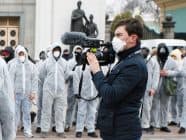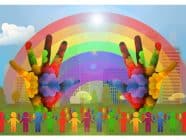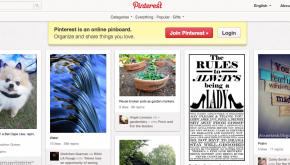Having just spent a semester at the Reuters Institute, Oxford, thinking about the journalism profession, three ideas have dominated my thoughts:
Could online picture galleries save the press photographer? Why did I write a book ‘Photojournalism: A Social Semiotic Approach’ explaining the value of press photos and how to analyse them, when it’s a dead profession? And, if it is a dead profession, then where are all the images coming from?
I started the semester worrying about (i.e. systematically analyzing) online news galleries. These are picture/caption sequences, purportedly telling visual stories, that have popped up on most online news portals over recent years. My research of these galleries forms part of an ongoing joint research project with a colleague of mine, Dr John Knox from Macquarie University, Australia. We have found that online news galleries are, for the most part, profoundly inferior news products. They are repetitive – you see very similar images, and sometimes indeed the same image used two or three times in one gallery. Very few of them attempt to find any form of overarching organizing principle (even just a simple temporal sequence would be a start). They are too long – no-one wants to look at a picture gallery with 20 (let alone 100) images in it. And they are of very poor quality – both technically and compositionally – sometimes the images are blurred, are poorly lit and composed, quite amateurish in fact. I am almost too embarrassed to comment on the caption texts that accompany these images because when they do appear they are often nonsense (and some don’t bother with any at all). And don’t get me started on those who have sold this space to sponsored advertising). We used to think that ‘advertorial’ was a dirty word. Now we have the pleasure of the ‘advergallery’ where it is only after you’ve clicked through to the gallery page (mission accomplished) that you discover that this is an advert and not news. W. Eugene Smith would be turning in his grave.
The online news gallery should be a space to celebrate photography AND the photographers who take beautiful, high-quality images in often extremely desperate situations and about extremely important issues and events. Here is a space (infinite one is led to believe) where not just one or two, but four or five, or maybe even eight (at a push) of the best images from an event can be thoughtfully put together to tell a compelling visual story. The New York Times does this every day, so why is everyone else struggling to master this as a valuable form of news storytelling?
About half way through the semester, my long-awaited academic monograph on the systematic analysis of press photography was published. In it I extol the virtues of the press photograph and its creator and I think that I am finally putting press photography on the map as a valid subject of rigorous academic review. Then the profession goes and dies on me. It hasn’t been a sudden death, of course. Like their colleagues around them, photographers have fallen victim to the economic rationalism that has gripped the industry, as it struggles to find a business model that can take on the internet. [Two of the three press photographers whose work illustrates my book have lost their full-time positions with newspapers in the last 5 years and are now battling it out in the field with the rest of the freelance fraternity.] It’s just that the rate of attrition for press photographers, artists and videographers has been much steeper than for their wordsmith colleagues. The American Society of News Editors has reported a drop of 43% in photographers, artists and videographers between 2000-2012. In May 2013, the Chicago Sun-Times got rid of its entire 28-staff photography department; in October, the Atlanta Journal Constitution announced that it would lay off a significant number of staff photographers; and the Times Herald-Record (New York) laid off its remaining four staff photographers in November 2013 (reported by Pew Research Centre, November 2013).
But what is most worrying is the reasoning behind these cuts: ‘new technologies’, ‘economic realities’, ‘social media’ and of course that ‘citizens and non-professionals’ are now providing much of the imagery used in breaking news.
Indeed, this may be understandable, given the sheer number of images being produced and shared online. Even just on one image-sharing site, Instagram, there are ‘150 million users sharing 16 billion photos and liking a billion of them every single day’ (valid at November 2013). I am not convinced that the ethical and legal issues around the use of eyewitness images from breaking news events have been fully addressed yet, likewise the challenges this imagery presents to the journalistic norms of impartiality have yet to be comprehensively explored, but these are topics for another discussion. What is also becoming increasingly evident, though, is that amateur images from sites including Instagram are increasingly populating online news galleries – a space which should be the preserve of the professional photographer and compelling visual news stories.
But not to worry, if all that the professional photographer has to look forward to when the legacy news organizations go solely online is an undervalued online gallery space overrun with amateur images, and where an algorithm does the work that a highly paid, highly skilled sub/picture-editor used to do, then I’d say you are well out of it. Walk away. Kick up your own Storm (ask Brian Storm’s site MediaStorm for help if you need to): I hear the internet is constantly hiring. Besides, anyone can take a photo, right?
Photo credit: Helen Caple / published with the author’s permission
Tags: BBC Online, end of photojournalism, Journalism, news galleries, Oxford, Pew Research Center, photographer, Photography, Photojournalism, picture galleries, press photographer, professional photography, Reuters Institute














































